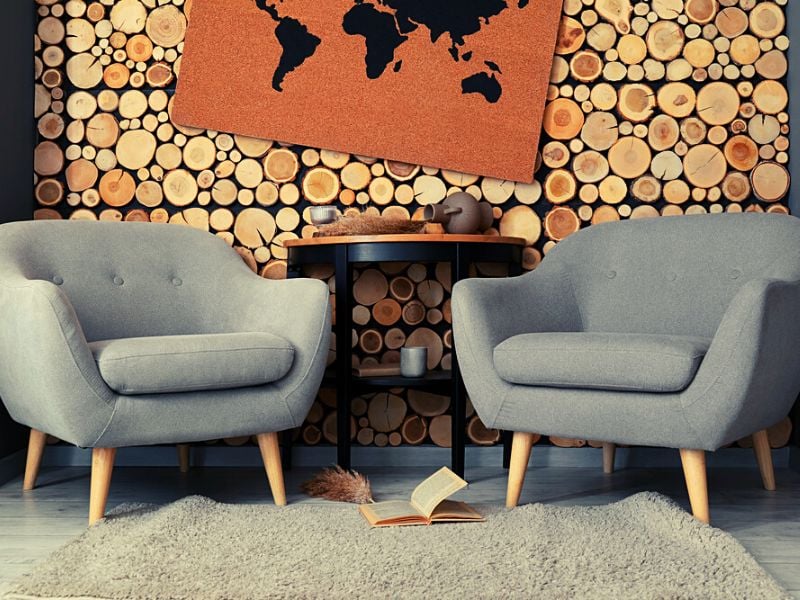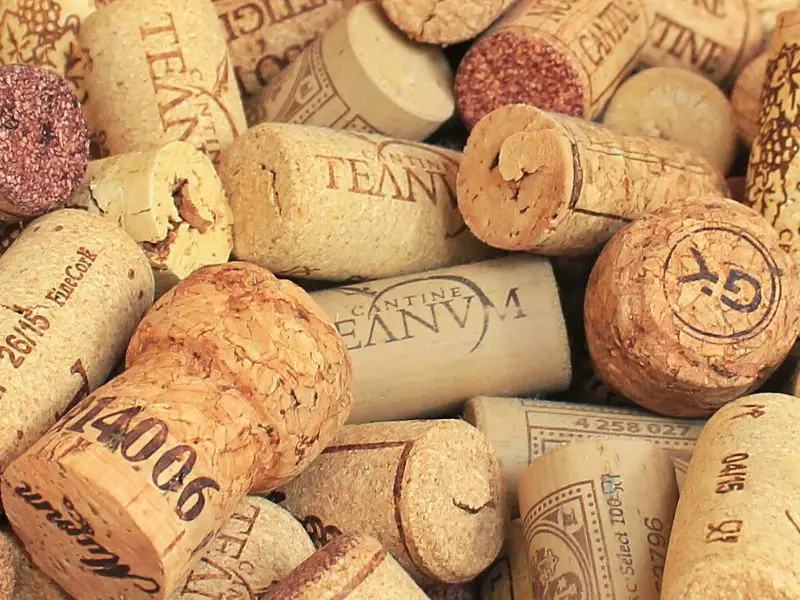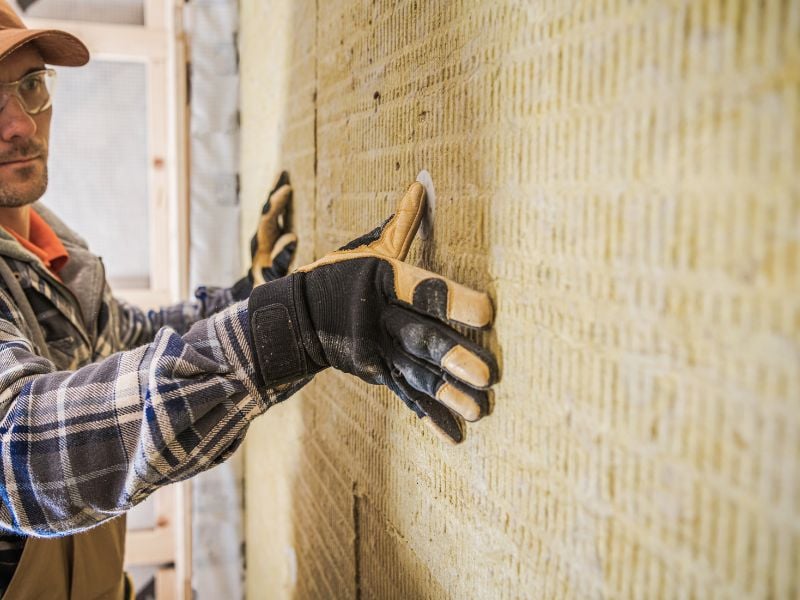More and more businesses are pledging to cut their environmental impact by developing greener options for their customers. In recent years, natural cork has become a popular material for footwear, flooring, and even cork yoga mats. But what, precisely, is cork? Is this another instance of “greenwashing”? Is cork sustainable? In this article, we look at the origins of cork and the science behind its sustainability.
What Is Cork?
Cork is a highly versatile, naturally occurring material derived from a tree. Cork oak woods are prevalent throughout the Mediterranean, which are vital components of the economic and ecological ecosystems they inhabit.
Cork oak woods are home to various plant and animal life. Over 200 animal species and 135 plant species find habitat in cork oak forest, says Amorim Cork Composites. They also mitigate climate change by absorbing tons of carbon dioxide, preventing soil erosion, and putting out fires because of the cork’s low combustibility.

Where Does Cork Come From?
Portugal hosts the largest cork oak forests worldwide and is responsible for almost 50% of the world’s cork production. Hundreds of companies are directly linked to the forest. These companies depend on the cork oak forest in various ways, including cork harvesting, storage, processing, use, ecotourism, and other related fields. These woods have provided thousands of people with stable employment for countless decades.
How Is Cork Manufactured?
So how does tree bark become a cork for a wine bottle? It’s pretty fascinating, to be honest. Cork is collected from the outer bark of the tree. And each time a layer is peeled off, a new cork product is made. The first removal is called “virgin cork.” This can be harvested when the cork tree is fully grown, which takes about 25 years.
The second stripping is referred to as “secuderia cork.” These two products are used in various applications, from building insulation to the fashion sector. Finally, after almost half a century, the third harvest yields the finest grade cork, known as “amadia cork,” often used for wine stoppers.
Each harvest happens every nine years throughout the spring and summer months when cork trees are undergoing their greatest growth. Cork trees are never chopped down during harvest, so collecting cork during its growth season protects the cork tree, allowing it to continue developing and producing cork for many years.
Is Cork Sustainable?
In a nutshell, yes, natural cork is a sustainable material. Compared to synthetic materials, Cork has several good environmental and social attributes, including carbon-positive, biodegradable, and renewable.
The environmental benefits of natural cork extend beyond the product itself.
To put it simply, the cork oak tree plays a crucial role in its local environment. It creates a setting favorable to various life forms and ecological processes, which benefits the local populace and economy.

“Cork is one of the most sustainable materials on the planet, and it’s time we start using it more.”
– The Good Trade
How Sustainable Is Cork?
The cork oak trees are self-sustaining and can regenerate their foliage without needing fertilizer, pesticides, water, or pruning. In Portugal, cork oaks’ above- and below-ground biomass stores 17,500 tons of carbon. After the bark is taken off, the tree can take in up to five times more carbon dioxide than usual to help the process of recovery. Because the cut-down trees give off so much oxygen, people in Portugal call these trees the “lungs” of the environment.
Cork oak plantations and forests are among the world’s most biodiverse ecosystems. The iberian lynx and the Barbary deer are endangered animals reliant on the cork environment. According to WWF, cork oak forests maintain one of the highest levels of biodiversity among forest environments and house the greatest concentration of plant varieties in the world. Cork is an entirely natural and biodegradable substance.
How Biodegradable Is Cork?
Cork, in its original state, is 100 percent natural and biodegradable. The answer to the question of whether wine corks are biodegradable is a little more complicated.
The answer depends on the compounds used to bond the cork together. The majority of cork marketed nowadays are secured with glue and maybe microplastics. But there is good news! Even if your cork product is not 100% biodegradable, several cork recycling options are available.
Beyond Sustainability
Cork, a symbol of sustainable innovation, is more than just a lightweight and elastic material commonly found in wine bottles. Its utilization stretches across a myriad of products like cork mats and cork flooring, thanks to its unique properties. Let’s explore the many facets of sustainable cork and understand what makes it an essential and environmentally friendly resource.
“Cork is nature’s way of showing us that beauty and sustainability can coexist.”
– Rachel Wolchin
Natural Cork and Its Harvesting
Natural cork is a marvel of sustainable cork production, derived meticulously from the bark of cork oak trees. The harvesting process is a delicate affair, stripping the outer layer of bark without damaging the tree’s main trunk, making it an entirely sustainable and non-harmful process to the cork oak tree. A single tree can live and contribute its bark for around 100 to 300 years, emphasizing the regenerative and sustainable nature of cork.
Cork Forests: Carbon Sequestering Giants
Cork forests are extraordinary ecosystems, playing a crucial role in carbon sequestration, with an ability to absorb approximately 10 million tonnes of CO2 annually. The sustainable cork industry has been at the forefront in initiating legal protection for these forests, establishing them as sanctuaries of environmental conservation and sustainable cork production.
Versatile Properties of Cork
The unique properties of sustainable cork—lightweight and relative elasticity—are the driving forces behind its wide array of applications, be it as a secure wine stopper or a handy wallet. The versatility also allows the production of cork flooring and cork mats, endorsing the material as the go-to solution for sustainable and practical needs.
Cork Industry: A Beacon of Sustainability
The cork industry is a testament to sustainable industry models, marrying renewable and recyclable practices with environmental preservation. The commitment of the cork industry to protect valuable environments while meeting consumer demands marks its standing as a paradigm of sustainable operations, with sustainable cork products being a reflection of this commitment.
“Cork is a reminder that sustainability can be as beautiful as it is responsible.”
– Unknown
Integration in Green Building Supply
For those inclined to include sustainable cork in their building projects due to its ecological benefits, it is advisable to source it from local retailers or companies that specialize in green building supplies. This approach ensures that the pursuit of sustainability is integrated right from the sourcing to the application of cork, reflecting a seamless blend of ecological balance and consumer satisfaction.
Conscious Consumerism: Recycling Natural Cork
The journey of sustainable cork does not end with its versatile applications. It extends to responsible consumption and recycling, allowing individuals to be active contributors to environmental preservation. Recycling centers for natural cork are instrumental in fostering a culture of conscious consumerism and ecological responsibility.
Some Uses of Cork
Cork has various thermal, acoustic, and electrical isolation characteristics that make it adaptable. For this reason, it’s used in many different ways.
1. Industrial Use
To make industrial-grade cork in factories, they combine several types of rubber with cork granules. The final product has exceptional wear resistance and heat resistance. Because of this, cork is a good sealer for various applications. It has a deep history of application in the automotive and electrical sectors. Mechanics also use cork for gaskets and seals.
2. Interior Decoration
Cork is a good material that can be used to make nice furniture for your home. If you get imaginative with it, it can look gorgeous. It can be used on both the floor and the ceiling. If you want to, you can even put it on your walls. The natural honey color of cork is one of the main reasons most people like to use it to decorate their homes.

“Cork is a material that is uniquely suited to meet the challenges of a sustainable future.”
– Treehugger
3. Leisure Activities
If you’re into sports, you’ve probably used some gear that was constructed using cork. In America, it is utilized in many items, including shuttlecocks, baseballs, cricket balls, pool cues, and bodyboards. Additionally, corks are used in table tennis paddles and whistles!
4. Leather Industry
Corks are used in almost all industries. In the leather industry, corks are suitable components in products like handbags, travel cases, wallets, and document holders.
5. Beverage and Construction Industry
Cork’s characteristics also make it a popular choice for use in the building. It’s ideal for use as an acoustic and thermal buffer. Moreover, cork is being seriously explored as an alternative in the building sector as the price of oil and its byproducts rises.
Cork agglomeration, also known as black agglomerate, is another product that may be made from cork grains. They may be manufactured in any standard size for use in making wall tiles. Cork agglomerate is now often utilized in walls, roofs, and ceilings.

“Cork is a material that inspires creativity and innovation, and encourages us to think differently about the materials we use.”
– Design Milk
6. Refrigeration Industry
Cork preserves its inherent qualities even under severe temperatures. This indicates that it is suitable for use in the construction of cold rooms. It is excellent for insulating water tanks and lagging pipelines. In addition, it emits no toxic gases or chemicals, making it a viable alternative in the insulation business. Its secret lies in its versatile qualities that typical insulating materials lack.
Frequently Asked Questions (FAQs)
Author’s Note
Considering all this, it’s easy to acknowledge that cork is a great natural material. Therefore, at the very least, get a wine with a cork stopper rather than a screw cap. Not only will you be drinking wine of higher quality, but you’ll also help protect the old cork oak forests of the Mediterranean, plus all the biodiversity that comes with it.

To learn more about our mother planet, read about Eco Fabric, History of Environmentalism, and 10 Most Endangered Plants.

